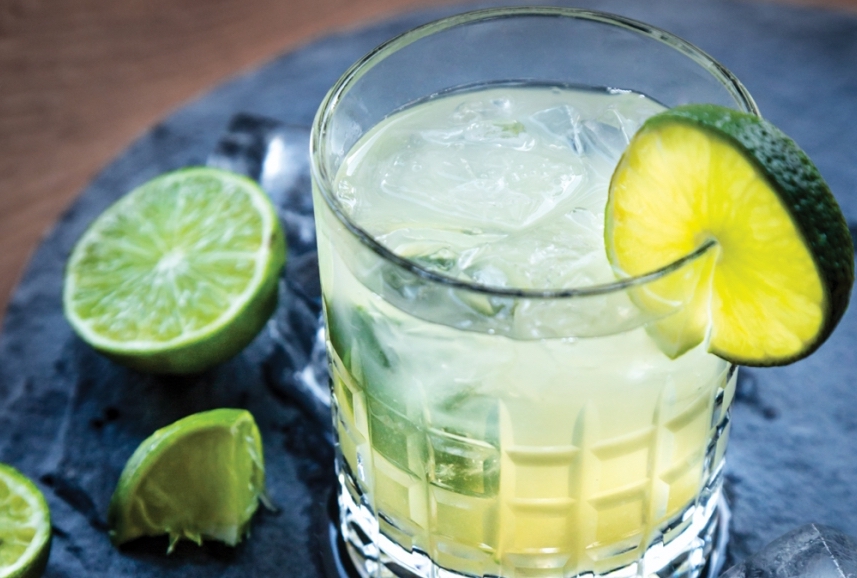This summer, spend some time with the Daiquiri’s Brazilian cousin, the Caipirinha. It’s a simple drink to make; a mixture of lime, sugar and spirit. Built in the glass, the Caipirinha begins with half a lime, quartered and muddled with cane sugar. To this mixture, you add ice and a stiff pour of cachaca, a Brazilian sugar cane distillate.
Now, a note on cachaca; it is not rum. Also, cachaca is rum. Cachaça, made in Brazil, is a distillate of sugar-cane juice that is aged in barrels made from local wood. The closest touchpoint to cachaca is something along the lines of rhum agricole produced in the former French colonies in the Caribbean. However, this aging in exotic wood imparts an earthy, funky characteristic to a spirit that’s already much more idiosyncratic than a classic rum.
These three ingredients (four if you count the ice, and you should) come together to create something so unique, but still familiar. On the surface, the Caipirinha looks like just another sour variant, but the difference is in the preparation. Muddling combines the lime and sugar in a way that elevates both ingredients. The grains of sugar abrade the surface of the lime, releasing aromatic oils from the zest and bittering agents from the pith. These elements combine with the juice of the lime and the sugar to create a wonderfully complex syrup. Adding cachaca and stirring all these ingredients over ice brings everything together in a way that’s just… wonderful.
As with so many cocktails, the origin of the Caipirinha is muddled (pardon the pun). However, most sources place its origin around 1918 in So Paulo. Beginning as a cold remedy of cachaca, lime, honey and garlic, the Caipirinha slowly grew into the form we know today. Widely celebrated as the national cocktail of Brazil, the Caipirinha is finally starting to find its followers abroad. Some have postulated that this process has been so slow because drinkers aren’t sure how to pronounce the drink’s name. With this in mind, take this as your password to your new favourite summer drink: “Kai-prah-heen-yah.”
